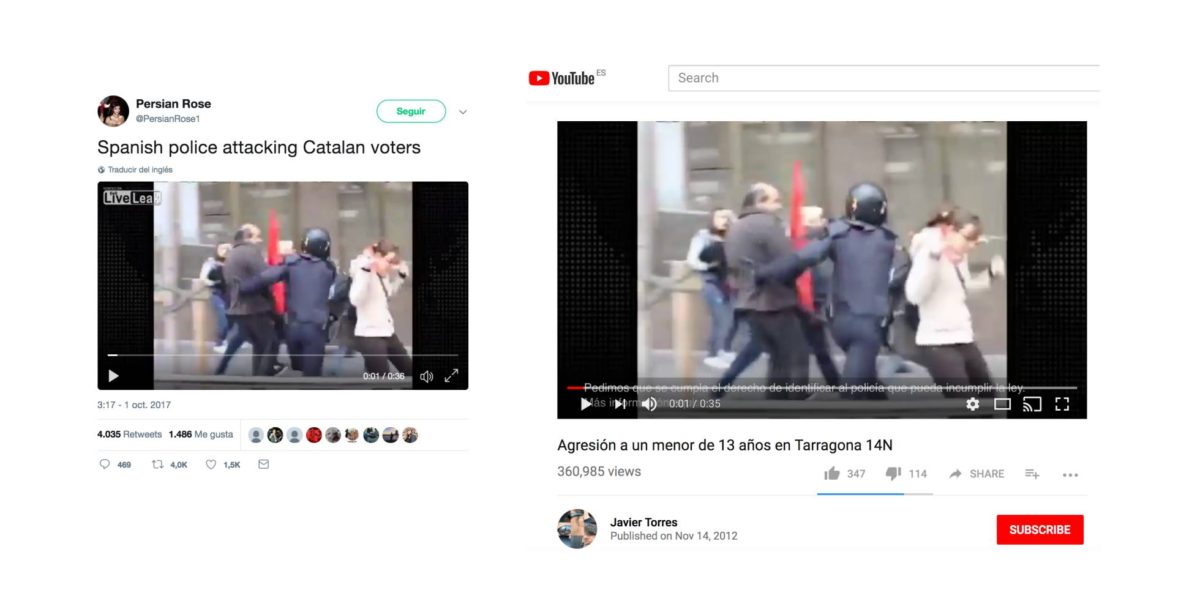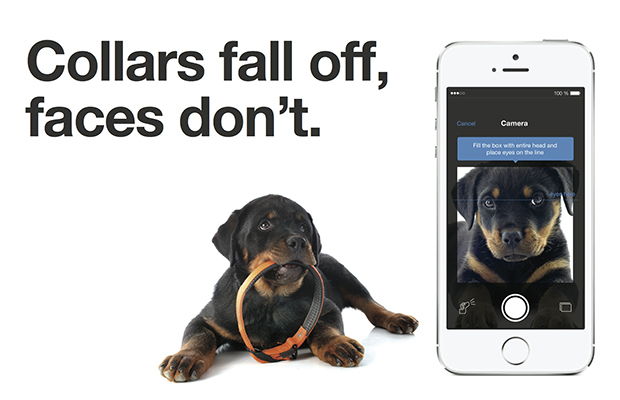In the past month a conflict has been discussed quite thoroughly, which escalated more than had been previously expected; the Catalan independence referendum. Especially the 1st of October, the day the referendum was held, seemed to cause quite some commotion in the global press. However, this uproar was not caused by the simple act of voting and its results, but by the hostile environment it was taking place in. Different types of Spanish and Catalan police had stepped in to prevent the voting from happening, while citizens were either trying to defend themselves or fight back. This blog is not going to be about who was right or wrong during the confrontations, but how social media actually influenced this aggressive escalation.
The first example of social media influence would be the press, through their links to different social media channels. During the entire day, global, national, and local channels were keeping everyone updated on the different scenarios. First, how citizens had slept in schools to hold the voting there the next day without being driven out by the police. Then, how in the morning the first confrontations had begun. Afterwards, how the Spanish police was becoming more aggressive and entering the voting locations to drive out people, while the Catalan police would not interfere severely. And the last pictures of the day were the ones which predominated the world’s press the next day; people with blood on their faces after a number of physical confrontations. (The Guardian, 2017)
Of course, one needs to recognize that it is the press’ duty to provide this information. However, the release of this news caused people actual physical harm. Here is why; during a Catalan interview, victims who had confronted the police and been harmed were asked what had brought them into this situation. During the interview it became apparent that some of them had been following the news on their phones and misjudged the information due to the news’ framing. They had understood that there was certain conflict happening but it appeared as if it was still safe to vote. Only when they arrived at the locations they realized the severity, but by then they were usually already encircled by the aggressive situation. (RTVE, 2017)
A second channel of escalation was the social platforms themselves. They created a positive same-side effect within the voting scenario. Since most people at the voting locations had started tweeting and posting about the events happening, others were informed about the current situation through those channels. However, most tweets and post were of a negative nature, related to either impatience, aggressiveness, or sadness. These emotions were transferred onto the readers of the posts and tweets, who would then go out on the streets to give those emotions some room of expression. However, this usually led them to the same unsafe environment the others had been in, which usually resulted in them being harmed and then tweeting and posting about it. Consequently, a large snowball effect was created of hurt citizens tweeting and posting about their situation, which then influenced readers’ emotions, so they would also partake in the conflicts, where they would also get hurt and tweet and post about it. Thus, the increased amount of people partaking in the conflicts at the voting locations and their sharing of information caused the amount of further people who would be harmed to grow. (Child, 2017)
Lastly, a large criticism was aired for some of the pictures of bloody people that were being shared on social platforms on the 1st of October, because they were identified as fake later on. An example is a picture of a child walking away while injured, which was later revealed to be already five years old (El Pais, 2017). However, fake or not, these type of pictures had the undesired effect of increasing aggressive sentiment towards the police even further, which usually resulted in physical harm.
To sum up, the number of conflicts and victims that resulted from the 1st of October were to a certain level influenced by the negative side effects of information being shared on social platforms. It did not matter whether the information was fake, badly framed by the press, or filled with negative connotations in the tweets or posts. It achieved the same result; escalating an out of control situation even further.
If now you are wondering how this relates to information strategy, think about the ethical implications this event had. Just as companies have to evaluate the type of information they are sharing about their products (e.g. product and price informedness), social media providers and sponsors need to focus on their products’ (i.e. the platforms) information sharing and ethical dilemmas. When they create their information sharing strategies, they cannot only think about which information about the platform should be shared, but also which information inside the platform.
Thus, if this blog post has any goal, then it is to make you think about the power information holds and what a large impact it can have on the society as a whole if shared incorrectly.
References:
Almeida, D. (2017), ‘Fake images from the Catalan referendum shared on social media’, El Pais, 6th October 2017, [online], available at <https://elpais.com/elpais/2017/10/06/inenglish/1507278297_702753.html>
Child, D. (2017), ‘Catalonia vote: Social media mirrors street tension’, Aljazeera, 1st October 2017, [online], available at <http://www.aljazeera.com/news/2017/10/catalonia-vote-social-media-mirrors-street-tension-171001144341704.html>
RTVE (2017), ‘Entrevista con las victimas del referendum’, RTVE La 1, [online], available at <http://www.rtve.es/directo/la-1/>
The Guardian (2017), ‘Live coverage of referendum day in Catalonia’, The Guardian, [online], available at <https://www.theguardian.com/world/live/2017/oct/01/catalan-independence-referendum-spain-catalonia-vote-live?page=with:block-59ce7b52e4b0320170983694#liveblog-navigation>
Picture: https://ep01.epimg.net/elpais/imagenes/2017/10/05/hechos/1507220162_048235_1507224381_sumario_normal_recorte1.jpg


